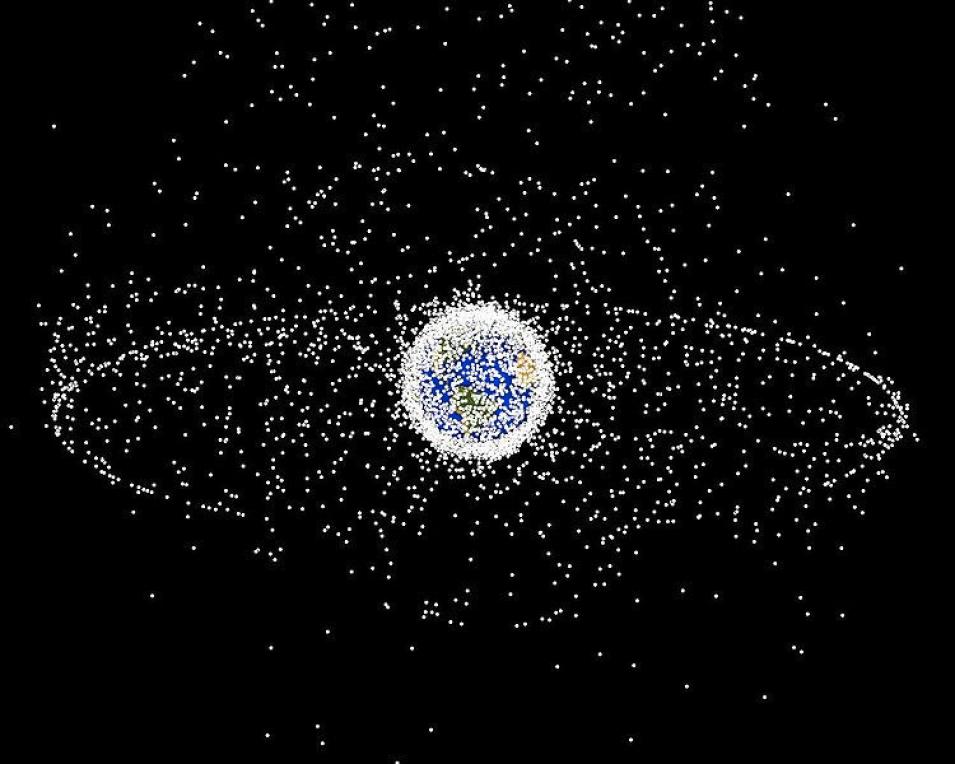The better the accuracy of orbit prediction, the better the decisions of how to function in space. Evasive maneuvers take energy. “Fuel is a main limitation for satellite lifespan,” Kirchner said. So if a satellite is predicted to come within 300 meters, give or take 500 meters, of a discarded rocket stage in five days, there is no certainty in the prediction. But with improved accuracy—a give or take of 100 meters—satellite operators may have confidence to avoid a maneuver.
With the growth in clutter, space exploration will be more costly and dangerous. Future generations will need to penetrate a layer of debris with more accuracy, planning for more fuel for evasive maneuvers and for more shields critical against small debris. Low-Earth orbit may even become impassable.
Given Envisat’s orbit and size, it will take about 150 years to gradually fall into Earth’s atmosphere. So it is a good candidate for removal from orbit. But how feasible is that? “The most progressive answer,” Kirchner said, “would be not yet. And the most hesitating answer would be never.” Spin is a big part of the challenge. To remove a satellite, something needs to be sent to attach to the target, and then together they would need to return. “You have to know how fast satellites are spinning if you want to remove them,” Wirnsberger said. The team is working on refining predictions to determine spin rate. Satellite Laser Ranging is proving to have more capabilities than initially anticipated. And with time, through cooperative knowledge, debris clean up may become more of a reality.
References
Kirchner, G., F. Koidl, F. Friederich, I. Buske, U. Völker, and W. Riede. 2013. Laser measurements to space debris from Graz SLR station. Advances in Space Research 51: 21–24, doi:10.1016/j.asr.2012.08.009.
NASA Crustal Dynamics Data Information System (CDDIS). Satellite Orbit Predictions. Greenbelt, MD, USA. http://cddis.gsfc.nasa.gov/Data_and_Derived_Products/SLR/Orbit_predictions.html.
Wirnsberger, H., O. Bauer, and G. Kirchner. 2015. Space debris orbit prediction errors using bi-static laser observations. Case study: ENVISAT. Advances in Space Research 55: 2,607–2,615, doi:10.1016/j.asr.2015.02.018.
For more information
NASA Crustal Dynamics Data Information System (CDDIS)
International Laser Ranging Service (ILRS)
Orbital debris information
Space debris information
| About the remote sensing data |
| Sensor |
Satellite Laser Ranging stations |
| Data set |
Satellite Orbit Predictions |
| Spatial extent |
Bounding Rectangle: (90.0 degree, -180.0 degree, -90.0 degree, 180.0 degree) |
| Temporal resolution |
1 day |
| Parameter |
Orbit predictions |
| DAAC |
NASA Crustal Dynamics Data Information System (CDDIS) |




